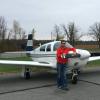-
Posts
172 -
Joined
-
Last visited

blaine beaven replied to Jarerh's topic in Modern Mooney Discussion

blaine beaven replied to Thedude's topic in Modern Mooney Discussion

blaine beaven replied to Thedude's topic in Modern Mooney Discussion

blaine beaven replied to Thedude's topic in Modern Mooney Discussion

blaine beaven replied to Brent's topic in Modern Mooney Discussion

blaine beaven replied to 201er's topic in General Mooney Talk

blaine beaven replied to NicoN's topic in Modern Mooney Discussion
We have placed cookies on your device to help make this website better. You can adjust your cookie settings, otherwise we'll assume you're okay to continue.